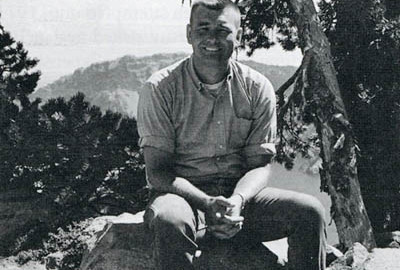How did Stan Geiger become involved with phytoplankton studies?
I’d like to elaborate a little on that. I became acquainted with Stan in 1974 when I worked at Oregon DEQ. Stan has a Bachelors Degree in biology from some little school in Missouri, and then decided to go to Yale Divinity School. He became a minister – Episcopalian, I think and served at a church in St. Louis for 12 years. He got his Masters of Divinity at Yale. Stan decided to leave the ministry and he went to Oregon State. He worked under Harry Phinney and got his masters in botany. Harry told Stan one time, if you’re looking for work, go see Doug Larson in Portland at DEQ. Well, Stan had a job with Beak Consultants, which is a Canadian consulting firm here in Portland. They’re based in Quebec, but they had a regional office here and Stan worked for them. He came to my office at DEQ looking for jobs that Beak could do and that’s how I met him in 1974. Stan was an outstanding phytoplankton guy and a great taxonomist.
After I started working at Crater, I had all these samples and every year they were building up. I maybe had 1,000 samples collected in my 6 or 7 years down there. I asked Stan to help with identification. I also needed someone who had a spectrophotometer so I can do chlorophyll analysis. Stan agreed to participate and to do all the work for nothing, pro bono. I even got to use Beak’s laboratory. At that time I wasn’t married so I had a lot of free time, I would go to his lab every Tuesday night for four years and work till sometimes midnight. Stan would help me with identification, though he wouldn’t always be there. I did all the counting of algae so I could quantify the collections. Over a four or five-year period, Stan identified more than 100 species. This was all new work. Stan also arranged for us to get some SEM work done with a grant from the Mazamas (36). So we got a lot of SEM microphotographs. Through this effort with Stan’s leadership and help we were able to quantify all these samples and identify all the species. I did all my chlorophylls there. I even had Stan put together a proposal for phytoplankton work. That was really neat, some things he could do with SEM, but the Park Service rejected that. I think it was in the ’82 report. It was a recommendation for work. So Stan was really important in that and we eventually published our work in a Mazama publication (37).


